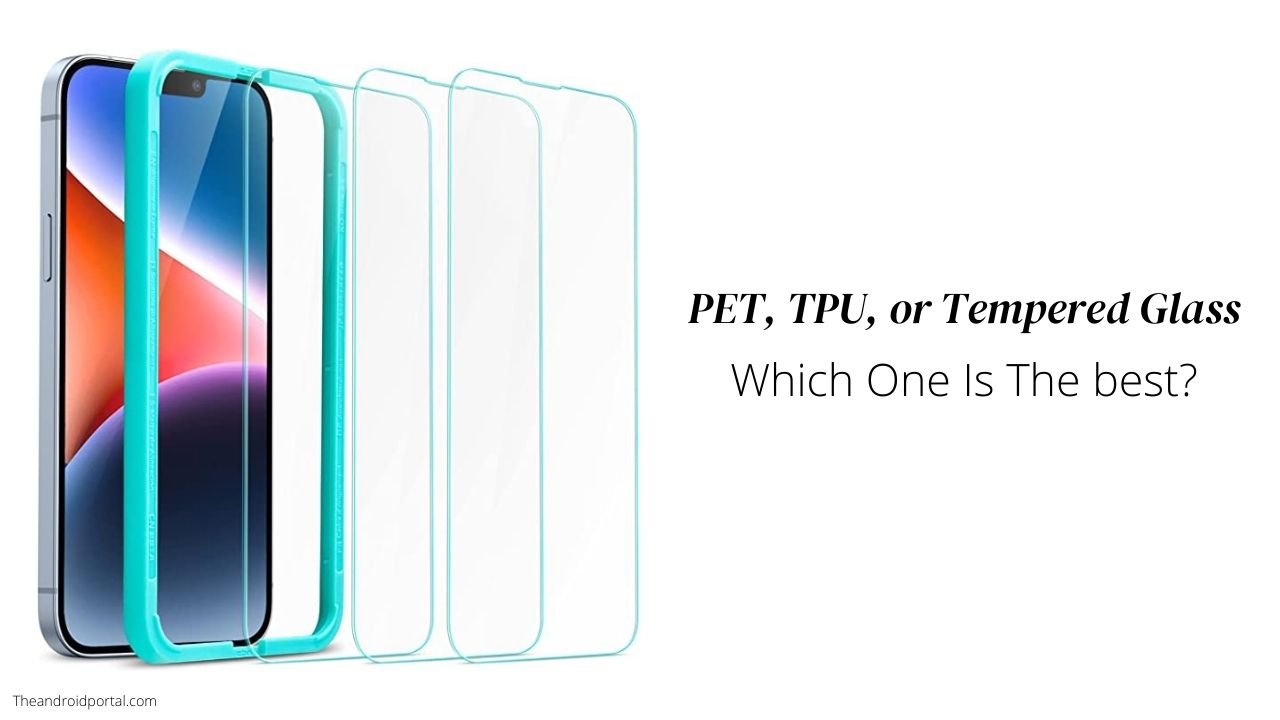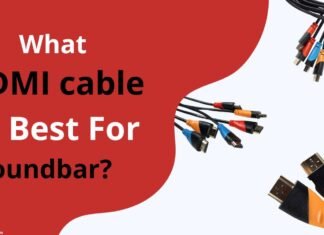PET, TPU, or Tempered Glass – Which one is the best? So you’re looking for a new phone case but can’t determine which material suits your needs. That’s not an uncommon question, especially with the many cases available on the market.
So what are the different materials used in phone cases? And how do they stack up against each other? Let’s look at the materials used in phone cases and why they’re better than others.

PET, TPU, or Tempered Glass – Which One Is The Best?
There is no clear “winner” for the best phone case material- each has advantages and disadvantages. PET is the lightest and most affordable option, while TPU is more durable, and tempered glass offers the best protection.
There is no definitive answer when choosing between a PET, TPU, or tempered glass screen protector. Ultimately, it depends on your specific needs and preferences.
PET is the cheapest and most common, while TPU is more flexible and prone to scratches. Tempered glass is the most durable but also the most expensive.
PET Film Screen Protector
Of course, PET does not mean dog or cat. It stands for “polyethene terephthalate,” a type of plastic that varies depending on specific applications. The manufacturing industry uses it for mundane things like liquid and food containers.
But that doesn’t mean PET protective films are glorified plastics for water bottles. They consist of a polyester film with a scratch-resistant matte layer and a silicone sealant on one side.
The premium ones are clear enough, adding a functional scratch-resistant layer to the screen. Their scratch resistance isn’t quite as good as the latest Gorilla Glass, but they’ll take a beating if anything abrasive comes into contact with the screen. Not only will it keep your screen looking new, but it will also help prevent any damage.
When shopping for a PET film screen protector, look for one specifically designed for your device. This will ensure a perfect fit and the best possible protection. With so many options on the market, you will surely find the perfect one.
TPU Screen Protectors
TPU screen protectors are the best way to protect your phone’s display. Made of high-quality thermoplastic polyurethane, they are durable and elastic, making them resistant to scratches and impacts.
TPU film is also elastic, meaning it has some “self-healing” properties. This means it can absorb some impact energy and retain its original structure.
Overall, TPU screen protectors are an excellent choice for a durable, long-lasting option. If you’re willing to pay more, a TPU protector is better than a PET film. At the very least, it will provide better impact protection.
Tempered Glass Screen Protector
A tempered glass screen protector is a great way to keep your phone’s screen looking new. But what exactly is tempered glass?
Essentially, tempered glass is a type of safety glass that is treated with heat or chemicals to make it stronger. If a tempered glass screen protector protects your phone’s screen, it is less likely to break if you drop it.
Tempered glass comprises multiple layers, with the bottom layer being impact-absorbing silicone. Then there is PET film, which provides an adhesive surface, and finally, there is tempered glass. These materials are pressed into the protector with a thickness of 0.4 mm.
Regarding various performance comparisons, glass film is generally better than TPU or PET. It has higher light transmittance (making it easier for you to see things on the screen), anti-reflection capabilities (which reduce glare), anti-glare capabilities (which reduces eye strain), and oleophobic properties (which help prevent fingerprints).
Dry Screen Vs. Wet Screen Installation Of Protections
There are two methods of installing a screen saver: dry and wet. The method is usually selected on the box. Installing a screen protector can be tedious and confusing, and many are hesitant.
Some even pay an “expert” to install one for them. Guard manufacturers know this, and all major brands come with all the tools and instructions anyone needs.
Dry Installation
The dry method keeps the protector glued to the screen with static electricity, so there’s no adhesive—and no mess! The application is very straightforward: follow these steps.
First, you’ll need a dust-free environment. Your bathroom after a shower is a good place to do it since the steam will ensure no dust particles are floating around.
Next, clean your phone thoroughly. Most protectors now come with special wipes and stickers to pick off any leftover dust particles. Use a bright light to check the display from different angles.
Next, carefully align the screen protector to the display. Some protectors come with special tools or stickers that help with the alignment to get it right. Peel any plastic covering the protector and place it on your phone (make sure the correct side is up). You can gently remove it and try again if it’s not aligned perfectly.
Then use a soft cloth wrapped around the edge of a credit card(or something else plastic) to remove any air bubbles and ensure your new protector has firmly adhered to your display!
Wet Installation
Wet installation is not any more difficult than dry installation. The process is very similar to the one described above.
However, before putting the protector on display, you must apply some liquid adhesive. There are different ways to do that, depending on your chosen brand.
Some provide tiny spray bottles with the solution inside. You spray the display or the protector (or both) and then have to adjust the protector by slightly moving it around until you’re happy with the fit. Afterwards, you use the provided squeegee to remove bubbles and excess liquid between the display and the protector. A final wipe on top should leave you with a nice, clean look.
Can A Screen Protector Hide Scratches On The Screen?
Screen protectors are designed to protect your screen from scratches, fingerprints, and other damage. But can they also help to hide existing screen scratches?
The answer is yes, but it depends on the type of screen protector you have. A clear screen protector will do a good job of hiding light scratches, but deeper scratches will still be visible. On the other hand, a privacy screen protector can help obscure scratches more effectively.
Wrap Up
With so many options and very reasonable costs, getting a screen protector for your phone is confusing that which one buy. PET film products are the best option for essential screen protection. TPU protectors may be strange, but they balance affordability and toughness best.
Finally, tempered glass protectors offer the ultimate protection and feel but are the most expensive.
However, even the more costly ones make sense for flagship smartphones and tablets. Unlike cases, they do small to change the look of your expensive device, but they can save you hundreds of dollars.











